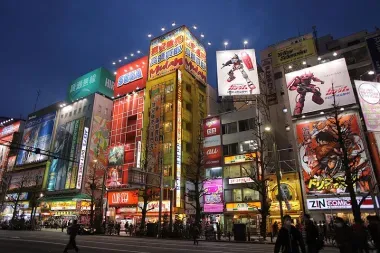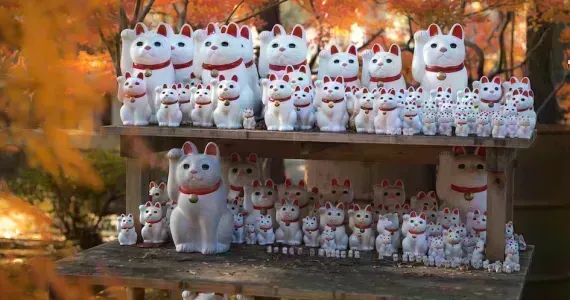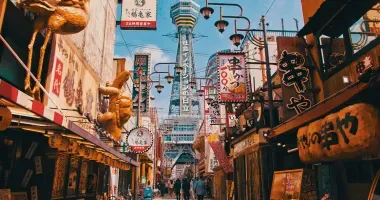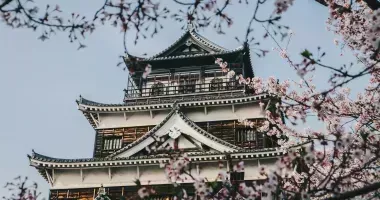Traveling to Japan: Tips for traveling with the Family
Traveling with the family can be one of the most rewarding experiences to have, especially to Japan. Take a look at the following tips to ensure a great time for adults and children alike!
Preparedness & Flexibility
Typically, traveling with a group of people, while undeniably a great time, comes with its share of obstacles to overcome. This can be magnified even further with families who are traveling with young children who are not used to being abroad, but at the same time there are great opportunities to learn about new culture together. However, this requires some proper planning, preparation, and open-mindedness to get the most out of the whole experience. Take a look at the following 7 tips to optimize smooth travels and quality time while traveling to Japan.
Tip 1: Know what to expect
While venturing on a trip with a free-form approach can be very fun and fruitful, it’s likely not the correct way to go about traveling with a family. With a culture as unique as Japan’s, doing prior research in terms of cultural norms will assure that you and your family avoid any taboos or misunderstandings. Etiquette with train travel, religious sites (it's a common thing to visit a shrine or temple while in Japan), and in public spaces are worth prior research. While many of these standards and practices will be universal in any country, the degree of acceptability for certain things may differ.
For example, conversation on the train in many Western countries is often not seen as taboo as long as it isn’t at an overly disruptive volume. While conversation between people on the trains in Japan is by no means unheard of, typically, one will notice the volume and frequency to be lower. Families may need to adjust their typical talking volume when communicating on the train.
To ease your means of access within Japan, helpful applications for transit such as Jorudan or the Tokyo Metro App are good to have. For using mobile data in Japan, some travelers may see a pocket wifi or Japanese SIM Card as useful things to order and utilize.
Also, do some research on translation or language applications if you or anyone in your family do not speak Japanese. For this, google translate will often suffice, but another popular app is “imiwa?” which can be used offline and provides good quality translations and keywords to use, but by no means is full fluency or proficiency a requirement for a trip to Japan.
Tip 2: Make a safety plan
Japan is often cited as a very safe travel destination by most, but it's important to set in place precautions to assure the security of you and your family. Stations in big cities in Japan can be very crowded and hectic. With directions and signage being predominantly in Japanese, it’s important to be prepared in case of a scenario where a child gets lost.
Do some research on who to report to in case any emergencies arise. Show your children what police officers in Japan look like as well as what station staff look like so that they know who to report to if they ever get lost. Writing a small message card for your kids to carry with a message prewritten in Japanese may be a handy thing for your children to keep on them in case of these kind of situations.
The following message (which can be copied, pasted, and printed onto a card or piece of paper) will communicate “Help, I am lost. Will you help me? (read as “Maigo desu. Tasukete moraemasenka?)
迷子です。助けてもらえませんか?
Also, establishing easy to recognize landmarks or locations to rendezvous at and specific meeting times will also do wonders for smooth travels. This can be handy at places like busy, central stations or crowded areas like Shibuya in Tokyo or Umeda in Osaka. Keep an eye out for distinctly colored or shaped buildings or signs that are easy for kids to recognize.
For more extreme situations where calling for help or authorities is necessary, be sure to remember the emergency numbers used in Japan. For the police, the number is 110, and for an ambulance and/or fire department, dial 119.
Tip 3: Be comfortable
Travel often comes with long days filled with activities, so t’s ideal to account for this and be sure to wear comfortable clothing that is easy to move in, along with footwear to accommodate for long walks. Well-fitting sneakers with plush soles are ideal for cities and amusement parks. More durable boots or hiking shoes will be best for more nature-centric activities.
Japan (famous for its four seasons) has a wide range of climates that are also dependent on the region of the country.
During summer, Japan is generally very hot, the conditions heavily oppressive by the high humidity. This is made more difficult by carrying heavy luggage, long walks, and busy crowds. If travel in Japan is done during the months of July, August, or early September, be aware of these conditions, though the more northern prefectures such as Aomori and Hokkaido have more mild climates compared to places like Tokyo and the southern areas like Hiroshima or Kyushu.
On the other hand, winters in Japan present a different set of potential travel problems. The aforementioned northern prefectures are typically colder than other parts of the country during Winter along with having more significant snowfall. But while this may have its share of obstacles associated with it for those who are not used to colder climates/snowfall, it can also be an enjoyable and unique experience.
The transitional seasons of Spring and Fall present the most popular travel times for tourism in Japan. Along with its most mild and tolerable climates, the unique natural attractions of the sakura blooming in Spring and the color-changing leaves in Fall attract many visitors. However, airborne allergens do make themselves known during this time, so antihistamine/allergy medication is suggested for travel, though these are easily purchased within Japan as well.
While many hotels are directed towards tourism, there are a few hotel types that are more geared towards business travelers or solo travelers. These include places like business hotels or capsule hotels. Business hotels are meant to accommodate travelers who will likely be traveling for a brief period of time, often for business reasons as the name implies. The rooms at these hotels are often fairly small with minimal amenities meant for one guest. For families, even the largest rooms at these hotels may not be adequate.
Capsule hotels are often highlighted on social media and online.These are often affordable, unique places to stay when traveling in Japan. However, the inherent nature of capsule hotels, having a single pod bedroom and public facilities, are not suggested for families. Though, For travelers with older children or young adults, this may be a fun option.
Typically, hotels like ryokan (Japanese-style inns) or western-style accommodation will be good places to stay. Traveler homes like ones hosted by Japan Experience are also great to look into, as they are spacious, private, and located in very central locations that are good for commuting.
Tip 4: Fun for the whole family
For destinations directly aimed towards children and families, one will find the many amusement parks and character-themed attractions throughout the country appealing. Amongst the most famous of these is Tokyo Disneyland and Tokyo DisneySea, two of the most celebrated amusement parks in the world.
Also within the Tokyo area is Sanrio Puroland, an amusement park centered around the array of unique characters created by Sanrio, including Hello Kitty, Cinnamon Roll, and Pom Pom Purin. This is a good choice for rainy days as it is indoors. Here, there are a number of child-friendly rides and shows, including a high-level kabuki performance featuring the Sanrio characters.
On a smaller scale, take a look around the neighborhoods you choose to explore or the areas within your hotels for an open park or playground that is around. Shinjuku Gyoenmae Park and Inokashira Park are two popular destinations for families with kids in Tokyo. Kodaji Park and Arashiyama Park are very popular in Kyoto. Osaka Castle Park and Tempozan Park are well-known in Osaka and the latter even has a ferris wheel which may be appealing to kids.
Hakone in Kanagawa is a day trip away from Tokyo and is a very nature-centric location with excellent, relatively up-close, beautiful views of the famous Mount Fuji. It's definitely a lot more spacious compared to Tokyo or even Kyoto and can be a nice oasis from city hustle and bustle that will allow the kids to enjoy a more open-aired environment.
But of course, while in Japan, it’s important to try and find engaging family activities that are very authentic to the local culture. Japan is famous for its festivals, or matsuri, that are especially prominent during the summer time. Matsuri are often held to celebrate a number of things, including the commemoration of local history or holidays. These matsuri have a large number of food stalls and stands for traditional Japanese street food, like karaage (Japanese fried chicken), okonomiyaki (savory pancakes with a number of toppings), and kakigori (shaved ice). Along with this, there are stalls with games meant for kids. At these stalls, kids can do things such as catch goldfish, win prizes, or other activities. Additionally, small children will often wear traditional festival clothing like yukata or jimbei.
Japanese pop culture is also very popular worldwide. The recognizable characters and unique artstyle of things like anime and manga present a lot of fun for both children and adults alike. Within Japan there are a plethora of unique and cool stores and events centered around this aspect of pop culture. Pokemon, the most successful franchise in history, has a number of exclusive stores throughout the country called Pokemon Centers where shoppers can buy products found only in Japan. There are also a number of specialty theme cafes based on different anime and manga franchises that are sure to give you and your kids a unique and memorable experience that is distinctly Japanese.
For the ultimate family experience, consider booking a guided tour, or let us help you plan an itinerary that appeals to everyone. This can sometimes be difficult to organize on your own and requires a lot of preparation, so don't hesitate to ask us.
Discover Japan's Wonders with Your Family: Fun-Filled Tours and Activities for All Ages!
Create Memories That Will Last a Lifetime as You Explore Japan's Culture, Nature, and Thrilling Adventures.
Tip 5: Know what (and where) to eat
Very few destinations are as flocked to by foodies as Japan. From street food ordered at a stand to luxurious Michelin-award-winning restaurants that require reservations made well in advance, there is a wide-range of culinary experiences to be had.
However, young children with developing or relatively picky palettes may not be keen on everything offered.
Knowing options that may be better received by your kids or any picky eater in your family in case certain foods aren’t very well received.
A good choice for food that is distinctly Japanese but easily adapted to a western palette is that of Yoshoku. The name literally translates to “western food,” and is basically food with recipes originating from western cultures but made with a Japanese twist. These dishes include things like hamburger steak, which is a steak made of minced meat served with sauce and rice. There’s also omurice, a Japanese style omelette often served with ketchup rice and sauce.
For yoshoku, there are many independently owned restaurants with delicious offerings, but well-regarded family chain restaurants are very affordable and consistent. Examples of this type of restaurant include Coco’s, one of the most famous of these family restaurants, Saizeriya, an italian-style restaurant chain known for its very affordable prices, and Joyfull, another popular option that is known for its meat dishes.
There are, of course, an array of reliable fast food restaurants accessible throughout Japan. While they carry familiar names and oftentimes very familiar food menus, oftentimes places like McDonald's or Wendy’s will have unique offerings only available in Japan, making it a worthwhile experience for all members of the family.
Even if a restaurant such as this isn’t accessible at any given time, or if you wish to venture into some more obscure restaurants, it may be good to know some common menu options that are also good for children.
For example, sushi is a very distinctly Japanese food many travelers wish to try when visiting, but raw fish is something that may be met with some hesitation by younger travelers. At many sushi restaurants there often exist a number of cooked dishes like grilled fish or fried seafood that your children can try while you indulge in the nigiri or sashimi. There are even more options for children at major chain sushi restaurants like Sushiro or Kurazushi that offer things like hamburger meat sushi, tempura sushi, and an array of side dishes.
Ramen is another popular dish amongst travelers, but if your children aren’t fond of noodle dishes, many places offer things like chashudon, which is a bowl of rice topped with grilled pork meat. Be sure to check the menu of restaurants prior to going in or making a reservation to make sure there is something for the whole family will like.
Tip 6: Know how to get around
Traveling with family entails keeping track of multiple people, so streamlining commuting will be helpful to everyone.
The central hub of travel for most who come to Japan is that of the train station. Japan is world-renowned for its railway travel, but the train stations do come with a bit of a learning curve for many.
Major stations like that of Shinjuku Station in Tokyo or Umeda Station in Osaka service a multitude of lines as well as housing a number of restaurants and even department stores. They are also often made up of multiple floors and can be a bit of a maze to navigate.
It’s easy to be a bit overwhelmed, especially when accounting for smaller children, luggage, and or strollers.
It is suggested to travel via these stations at less busy times. The morning rush in big cities can usually be seen from 7:00 AM to 9:00 AM. The end-of-day crowds of commuters going home is usually from 4:30 PM to 6:30 PM.
Stations in Japan will almost always have operable elevators and escalators, so for kids who grow tired more easily, long climbs up steep stairs are avoidable. These facilities are also good to remember in case you or any other member of the family may have a mobility disability.
An interesting thing to keep in mind is how escalators are ridden in Japan.
There is typically a side where pedestrians will stand and wait as the escalator moves and a side where people will continue to walk up the escalator as it moves. In Tokyo, people typically stand on the left and walk up on the right side. But in Kansai, it is usually the reverse.
On the note of accessibility, there are priority seats available on each train car for passengers who may need such to use. This includes those with mobility disabilities, pregnant passengers, or parent passengers who are bringing on things like strollers.
Access to the platforms can sometimes be confusing. To pass through the gates, simply insert the appropriate ticket and then retrieve it once it has been validated before passing through the gate completely.
Due to a temporary stock-out of transport cards such as Pasmo or Suica, travelers are directed to other prepaid transport card options, such as the Tokyo Metro Pass.
With these cards, you simply scan them to access the platforms. Children under five can travel free of charge if accompanied by an adult, but this is limited to two children per adult. Beyond that, a ticket must be purchased for each additional child. In the case of two adults, up to four children under the age of five can travel free of charge. Children in this age group traveling alone generally benefit from a reduced fare, approximately half the adult fare.
The Japan Rail Pass also offers the possibility of purchasing train tickets, which can be particularly advantageous when traveling long distances or during peak periods. These reserved tickets guarantee a seat on the train of your choice, which is essential to ensure a comfortable journey, especially if you're traveling with the family. Using your Japan Rail Pass, you can easily book your tickets in advance, avoiding the stress of searching for seat availability at the last minute. This feature brings peace of mind to your travel experience in Japan.
Here are some of our available train routes:
Tip 7: Be flexible
We all know that travel seldom ever goes 100% according to plan. Family travel inherently will be more prone to setbacks or plan deviations, so an open mind and flexible itinerary is the key to a successful trip.
As usual, it is always advised to have a backup plan in case of sudden closures or bad weather. Taking the time to plan multiple days within one city can be nice as then the plans for any given day can be swapped for another.
Additionally, depending on the age of the children travelers, leaving a bit of the itinerary to them can encourage cultural learning and planning. Allow your kids to do their own research on what may interest them in a country as unique as Japan and take the opportunity to experience it all as a family.
Remember to relax and have fun
Japan attracts visitors from all nations and cultures for good reason. There is so much to enjoy and see and experience and its universally lauded accommodations make it a great destination for families in particular. For these families, preparation and flexibility are the key to an optimal time abroad that will for sure inspire and educate.





























































